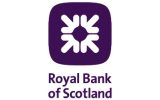Current Accounts With Cashback
Earn up to 3% Cashback

Santander 123 Current Account
Earn Up To 3% Cashback
- 2.00% AER (1.98% gross variable) interest paid on balances up to £20,000
- Earn up to 3% cashback with Retailer Offers when you use your Santander debit card at a range of major retailers
- Mobile App
Current Accounts with Cash Back
There are a number of banks that will offer customers cash back with a current account if they agree to switch to over. A current account that offers customers this benefit will generally grant them a free cash sum if they fulfill certain requirements when switching their account over.
Although a free cash back benefit may seem highly appealing, it should be remembered that there may be several requirements that need to be fulfilled by customers in order for the offer to be considered valid.
The following are some examples of common requirements that may be included as part of a cash back current account:
- Some banks may require that customers deposit a minimum sum
- Banks may stipulate that only customers with suitably high income accounts will benefit
- Customers may be expected to make no withdrawals for a certain period, 3,6 or 12 months etc
If you are searching for a current account with cash back, it is recommended to compare current accounts from several different providers in order to find the best deal available, and to help you we have created some easy to use comparison tables.
It is important to remember that there will usually always be a number of important terms and condition that must be adhered to by customers in order to receive this benefit. In many instances, these offers may be included by banks as an attempt to persuade customers to switch over from their current provider.
Before switching to a current account with cash back, these terms and conditions should be carefully considered. In order to compensate for this cash offer, a bank may for example charge an unusually high rate for its overdraft services for a particularly lengthy period of time.
In order to find a current account with benefits that are best suited to your individual requirements, it is strongly recommended to compare different current account offers as much as possible.
What if there are any problems?
And the switching service is covered by a guarantee: the new bank must refund you if there are any charges because payments didn’t go through on time. But you have to ask them for this.
Can I keep my old current account open when I switch?
What about transferring “recurring payments”?
Because they’re linked to a card rather than directly to your bank account, they’re not included in the switching service (or covered by the guarantee).
It’s not always clear which are your continuous payment authorities: you won’t find them listed on your online banking portal. When you set them up you were asked for you card details (“please read me the long card number”) rather than your bank account and sort code numbers.
You’ll need to check your monthly card statements: any regular payments going out each month that are not marked as DD (direct debit) or SO (standing order) are likely to be continuous payment authorities.
If you want to keep paying for this service (or loan) in this way, you’ll need to contact each provider and tell them your new card details as soon as you have them.
This may sound like a lot of bother, but it is useful to check periodically what’s going out of your account regularly: there may be services you’re not using (such as fast delivery, or additional online data storage) that you want to cancel.
What about the individuals who have my bank account details, for sending occasional payments?
It’s probably not a good idea to just email all your Contacts with your new account details. If you’re concerned about email security, the most secure way of sending bank account details to specific people is via WhatsApp.
And if any payments are accidentally made to your old account, for 36 months (three years) after you’ve switched, your new bank or building society will arrange for any payments to be automatically redirected to your new account. They will also contact the sender and give them your new account details.
When should I choose to make the transfer?
If all your regular payments tend to go out of your account around the same time it’s best to choose a time of the month when your bank account isn’t so busy.


